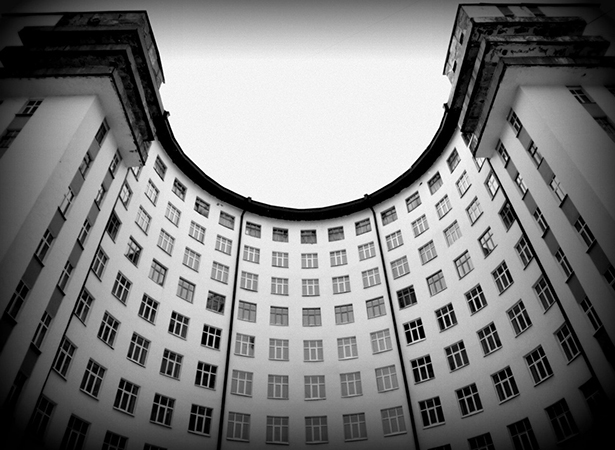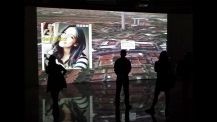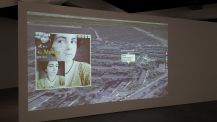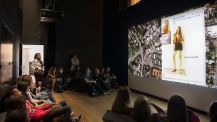Centre for Contemporary Arts (NCCA)
3rd Ural Industrial Biennial, Ekaterinburg, RussiaCurator: Li Zhenhua
Artists: Baltensperger + Siepert (Switzerland, Zurich), Marianne Muller (USA, New York), !Mediengruppe Bitnik (Switzerland, Zurich), Com & Com (Switzerland, Zurich), Yiquan Wang (China, Shanghai), Wenfeng Liao & Bignia Wehrli (Germany, Berlin), Сatherine Biocca (Germany, Berlin), Thomas Eller (Germany, Berlin), Chen Shaoxiong (China, Beijing), Xu Qu (China, Beijing), Yan Xing (China, Beijing), Zheng Yunhan (China, Beijing), Yan Lei (China, Beijing), Xu Tan (China, Guangzhou), Chen Qiulin (China, Beijing), Yuan Gong (China, Shanghai), Lu Pingyuan (China, Shanghai), Hu Fang (China, Beijing), Double Fly Art Centre (China, Hangzhou), Ju Anqi (China, Beijing), 9 mouth (China, Beijing), Ehsan Ul Haq (Amsterdam, Netherlands), Chris Paul Daniels (UK, Manchester), Kwan Sheung Chi (China, Hong Kong), Knut Asdam (Norway, Oslo), Marianne Heier (Norway, Oslo), Salla Tyyka (Finland, Helsinki), Chim Pom (Japan, Tokyo), Marc Lee (Switzerland, Zurich), Tang Nannan (Xiamen, China), Cao Kai (Changzhou, China)

3rd Ural Industrial Biennial of Contemporary Art
The keyterm of the 3rd Ural IndustrialBiennial is mobilization as an ability to change and torise to a fundamentally different level. Mobilization—just as historyitself—refused to recede into the past; it becomes more and morerelevant in the wide variety of forms. It may unite people based on theirnational, cultural, ethnical or religious identity or based on theiradherence to certain values; it may be short run or may last for a longtime. What role can contemporary art play in all this? Maybe it can serveas an incentive, or provide a venue, or supply the reflective understandingof mobilization processes?
In 2015, all Biennial's programswill be concentrated at the main project venue—that is, at the IsetHotel. Iset Hotel is a central building of the NKVD residential compound,which became popularly known as "Gorodok chekistov" (The Town of KGBofficers): it is a prime example of international constructivistarchitecture, which became the culmination of revolutionary architecture inthe 1920s–1930s Urals and embodied a number of utopian ideas aboutnew socialist housing. The final exhibition of artistic residences, specialprojects, performance platform and Biennial's research projects will bepresented in this space.
The vast artistic residencesprogram, created by the 2nd Ural Industrial Biennial, will exceed theboundaries of Sverdlovsk region, with new artistic research in veryspecific production spaces: Metalware Plant, Motorcycle Works, IronSculptures, Porcelain Factory among others.
Intellectualplatform is formed around three pivotal points in the development ofYekaterinburg: industrialization, deindustrialization andreindustrialization. These episodes may be only provisionally localized intime, with the last two stages, despite their apparent contradiction,forming two aspects of the same process. Arguably, only the age ofclassical industrialization is irrevocably over. Each stage was accompaniedby a particular socio-cultural situation, whose formation was accompaniedby a mobilization appearing as a response to a crisis.
Alisa Prudnikova, Commissioner and Artistic Director of Ural IndustrialBiennial:
"One of the objectives of the Biennial is to create acommunicative sphere, which would help to overcome barriers in perceptionof contemporary art on the one hand, and industrial landscape on the other.Mobilization is a theme that first appeared as an answer to the question:how we can continue to think the Biennial's problem field and, while usingexamined industrial contexts, move to actors and to concrete scenarios ofmobilization processes, which intensified significantly in modernsociety."
Li Zhenhua (Beijing—Basel) andBiljana Ciric (Shanghai) will be the curators of the main project ofthe 3rd Ural Industrial Bienial:
Biljana Ciric isan independent curator. Her project Migration Addicts was presentedin the Collateral Events program of the 52nd Venetian Biennale in 2007, andat the Biennale of Urbanism and Architecture in Shenzhen/Hong Kong in 2008.In 2013, Ciric initiated the seminar platform From a History ofExhibitions Towards a Future of Exhibition Making; she regularlypublishes in Broadsheet and Yi Shuamongother magazines. Ciric was on jury on number awards including Hugo BossAsia Art Award (2013) and she is on nominating council for Vera List Prizefor Art and Politics (2014/2015).She has been nominated for an ICIIndependent Vision Curatorial Award (2012).
Li Zhenhuais a multimedia artist, a curator and a producer. His projects include: ArtBasel Hong Kong cinema sector (2014, curator), 15 Years ofContemporary Chinese Art award (Art Power Plant in Shanghai, 2014,co-curator), Beijing Art Laboratory (Beijing ArtLab, founder). Li is amember of the selection committee of Summer Academy in Paul Klee Center andin Prix Pictet (Switzerland), and also a member of theinternational committee of the Digital Revolution exhibition(Barbican Center, UK, 2014).
Exhibited Artwork
Pic-Me - Fly to the Locations Where Users Send Posts
Online Project for Interactive Media Art InstallationsWith Pic-Me you can virtually fly to the locations from where users send posts to Instagram. On Google Earth, these are mapped at the exact location where they were photographed. One might describe these posts – images or short videos accompanied by comments, tags and geolocalisation – as a kind of digital small talk or personal conversation. Different than face to face conversations, these more …

Jimei X Arles, Xiamen

HEK, Basel

Festival IMAGES, Vevey